How to Get into Golf: A Beginner’s Guide to Teeing Off
Key takeaway:
- Golf is a challenging game that offers both rewards and self-discovery.
- To get started in golf, consider making the decision to learn and play, and understand the importance of lessons over expensive clubs.
- Learning the rules of golf, including scoring and key rules, is essential, and there are resources available to help you understand the game.
- Improving your game can be done through a combination of reading golf books, implementing the 80/20 rule for practice, and taking lessons with a trained professional.
- Managing expectations and enjoying the learning journey is important in golf, as it is a challenging game.
- Start learning golf at driving ranges and progress to 9-hole pitch and putt courses to master the basics of the golf swing.
- Understanding the short game, including chipping, pitching, and putting, is crucial in golf.
- When selecting golf equipment, focus on essential clubs for beginners and try them out before making a purchase.
- Navigating golf as a beginner requires patience, practice, and a willingness to embrace the challenges of the game.
Introduction to Golf
Golf, a sport loved by millions, offers an exciting and challenging experience on the green. In this introduction, we’ll delve into the basics of golf and what you need to know to get started. From understanding the game’s rules and traditions to mastering essential techniques, this section will provide you with valuable insights that will set you on the path to becoming a skilled golfer. So, grab your clubs and let’s explore the world of golf together.
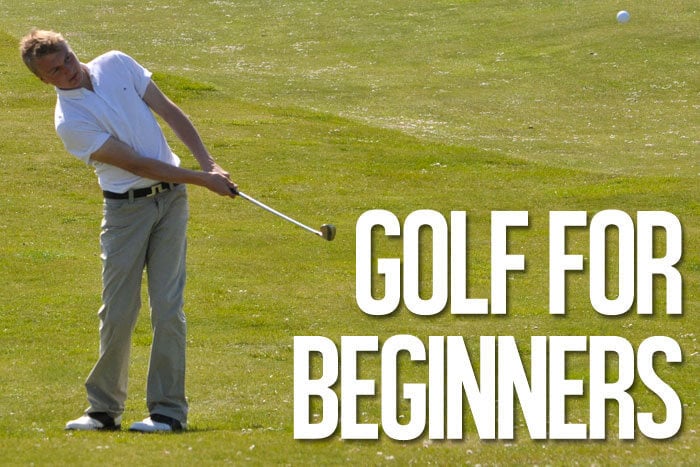
Understanding the Game of Golf
Golf is a sport that tests players’ skills and mental fortitude. It’s a game of patience, focus, and strategy. To understand it, one must learn its rules and scoring system. This includes terms like par, birdie, bogey, and double bogey. Knowing these can help track progress and set goals. Other rules ensure fair play.
To further one’s knowledge of golf, beginners can read books written by professionals. Using the 80/20 rule can help make efficient use of practice time. Taking lessons with an instructor can give personalized guidance.
Managing expectations is key. Appreciating golf’s challenges from the start can help beginners have a positive mindset. Embracing the learning journey helps them find joy in small victories.
Overall, understanding golf involves grasping its rules, taking resources and lessons, managing expectations, and enjoying the process. The challenge and reward of it? Frustration.
The Challenge and Rewards of Golf
Golf is a challenging yet rewarding experience. Precision, patience, and dedication are needed to navigate the course. The satisfaction of hitting the perfect shot and achieving a lower score is a great feeling. Nature provides a serene environment that enhances relaxation and mental focus.
It is also a journey of self-discovery. Golf tests patience, resilience, and composure. Players can learn about their strengths and weaknesses. There is always something new to learn, from basics to advanced techniques. Golf offers continuous growth and development.
Socially, golf is a great way to connect with others who share a common interest. It builds camaraderie and creates memorable moments. Golf has been around since the 15th century Scotland. It has evolved over time, yet still preserved its core essence. It attracts individuals from all walks of life, creating a strong sense of community worldwide.
Golf is not just a game, it’s a journey of self-discovery on a beautifully manicured battlefield.
Golf as a Game of Self-Discovery
Golf isn’t just a sport; it’s a journey of self-discovery! Challenges and rewards give players the chance to explore themselves. When tackling obstacles, they dig deep to find their own solutions. And the game isn’t just physical – it requires mental focus, patience, and emotional resilience. Play it and learn more about yourself!
Every shot is an opportunity for self-reflection and improvement. Golfers adjust their grip and practice different swing techniques to hone their skills. Plus, the game teaches decision-making, as each player is responsible for their own shots.
There are strategies to maximize your self-discovery experience. Keep an open mind and be willing to learn from successes and failures. Seek guidance from coaches and trainers to uncover your potential. Set achievable goals and track progress – this will help you learn more about your strengths and weaknesses.
Jump into golf – the only thing harder than hitting a hole in one is resisting throwing your clubs in frustration!
Getting Started in Golf
Are you considering taking up golf? In the “Getting Started in Golf” section, we’ll cover everything you need to know to make an informed decision. From the initial decision-making process to considerations regarding equipment and costs, we’ll provide insights that will set you on the right path. So, let’s dive in and discover how you can embark on your golfing journey and start enjoying the many benefits this sport has to offer.

Making the Decision to Learn and Play
Making the decision to learn golf is a big step for beginners. It’s a game with a unique challenge and a rewarding experience for all ages and skill levels. It needs patience, focus, and dedication. Plus, it provides opportunities for self-discovery and personal growth.
When beginning golf, think about equipment and cost. Fancy clubs might seem nice, but lessons from professionals are key. Used clubs can be a budget-friendly option.
Knowing the rules of golf is also essential. Understand the basics – par, birdie, bogey, and double bogey – to track progress and set realistic goals. Learn etiquette and how to handle situations during gameplay. Read books and use online tutorials to navigate the rules.”
Improving your game requires practice. Use the 80/20 rule to focus on areas with the greatest impact. Take lessons to get personalized feedback. And, lastly, manage expectations. Golf is challenging so approach it with realistic goals and patience. Embrace learning rather than just outcomes.
A crazy fact: According to the National Golf Foundation, 25 million people in the US play golf! Remember, it’s not about the expensive clubs, it’s about the expensive therapy bills afterwards.
Equipment and Cost Considerations
Golfers need to consider equipment and cost when planning to join the game. Clubs, balls, clothing, and accessories must be thought about. Clubs are key for a successful game, so beginners should find ones suitable for them. Balls offer different distances and control, so this should be taken into account. Comfort and professionalism can be achieved with the right attire. Plus, accessories such as gloves, bags, tees, and shoes should factor into the decision.

Price is important when picking out golf equipment. It can range from affordable to expensive. Although buying fancy clubs is tempting, lessons with a pro are more beneficial for beginners. This helps them learn the game without breaking the bank. Used clubs are a great way to save money too. With proper equipment and cost considerations, golfers can make smart decisions and boost their golfing experience.
Importance of Lessons over Expensive Clubs
Lessons are more important than expensive clubs in golf. Investing in lessons allows players to understand the nuances of the game and learn from experienced instructors. This can help improve consistency and accuracy, leading to better overall performance on the course.
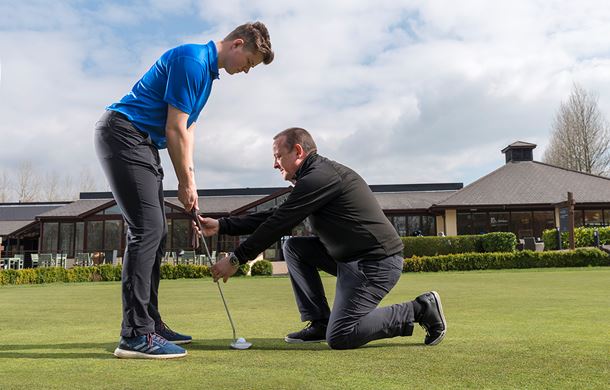
Furthermore, lessons provide personalized feedback and correction. This helps beginners build a solid foundation and grow as golfers. Top professional golfers credit their success to the importance of lessons early in their careers. Focusing on technique with expert instruction, instead of relying on pricey equipment, hones skills and yields remarkable results.
No need to worry, buying used clubs doesn’t leave you feeling like you’ve been clubsed!
Tips for Buying Used Clubs
Buying pre-owned clubs can be a savvy decision for novices wanting to save cash while still getting decent quality gear. Here are some helpful hints for buying used clubs:
- Check the brand and model: Prior to purchasing used clubs, it is vital to research the label and model you are interested in. This will help you decide the quality, worth, and appropriateness of the clubs for your game.
- Examine the condition: When buying used clubs, thoroughly inspect each club for any signs of wear or harm. Check the clubface, shaft, grip, and general state to guarantee they are in good working order.
- Think about customization options: Buying used clubs may provide a chance for customization. Search for clubs that can be modified or changed to suit your swing style and inclinations.
- Test before buying: Whenever possible, try out the clubs before buying. Many golf retailers have demo clubs to test, allowing you to feel how each club performs and choose if it suits your game.
Lastly, recall that buying used clubs should not compromise on quality. By following these tips, you can get excellent deals on used golf clubs without compromising performance or delight on the course.
Learning the Rules of Golf
Learning the rules of golf is essential for every golfer. In this section, we’ll explore the basics of scoring and key rules, as well as provide resources for learning golf rules and scoring. Whether you’re a beginner or looking to improve your game, understanding the rules will enhance your golfing experience and ensure fair play on the course. So, let’s dive into the fundamentals and discover the valuable resources available to help you navigate the world of golf rules and scoring.
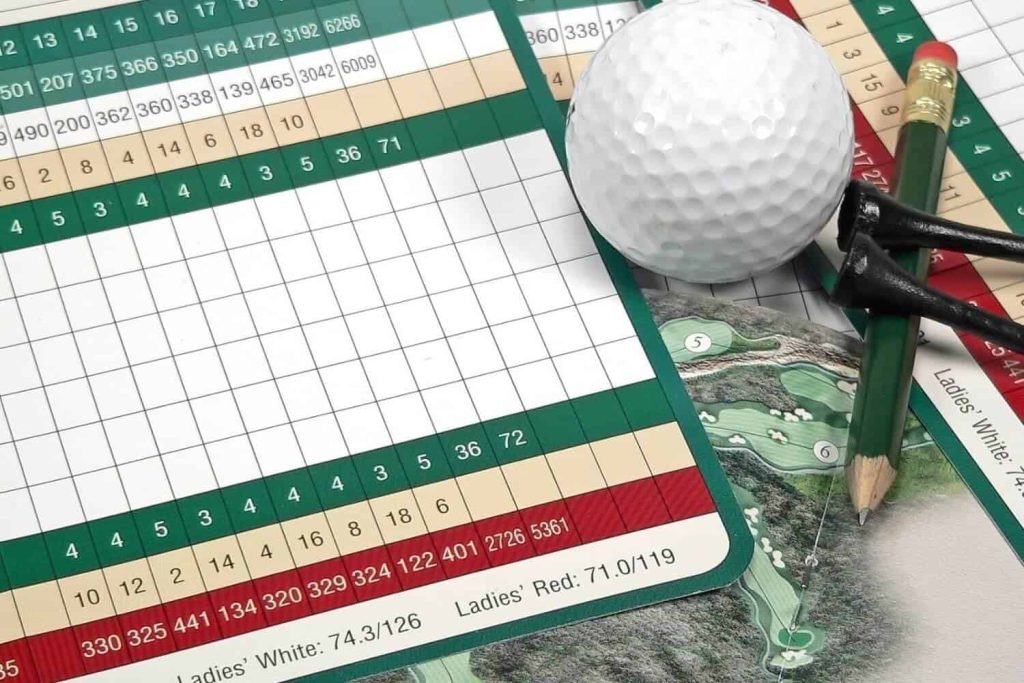
Basics of Scoring and Key Rules
Golfers must grasp the fundamentals of scoring and rules. Par denotes the number of strokes a skilled golfer is meant to take on a hole. Birdie is one stroke below par, while bogey is one stroke over. Double bogey is two strokes more than par. Knowing these terms allows players to track their progress.
Besides scoring, golfers must be aware of other rules. For instance, handling hazards and out-of-bounds areas correctly. Also, knowing the order of play and proper behavior on the course is key. This includes respecting fellow players, repairing divots and ball marks, and keeping pace with the group ahead.
In addition to basics, knowing penalty strokes and when to lift and clean your ball can be helpful. Interestingly, the scoring system began in Scotland in the mid-18th century. Back then, they used words like “bogging” (now bogey) and “hogging” (birdie). This standardized language has enabled consistent communication between golfers worldwide.
It’s only in golf that screaming “fore” after hitting a ball into the woods is socially acceptable!
Understanding Par, Birdie, Bogey, and Double Bogey
Par is the measure of total strokes a golfer takes on a hole or course. It’s important for golfers to understand par, as it serves as an indicator of their performance and the difficulty of the course. Par is usually set according to the length and design of the hole – shorter holes have lower par scores, while longer ones have higher.
A birdie means completing a hole in a stroke below par, while a bogey is one stroke over par. Double bogey is two strokes more than par.
Golfers must be aware of these terms – par, birdie, bogey, and double bogey – to measure their performance on each hole compared to the expected standard. Aiming for birdies or pars helps golfers improve and lower their scores.
Getting to grips with golf can feel like trying to crack an intricate code. But, unfortunately, it won’t save the world!
Other Essential Rules to Know
Golfers must learn additional rules beyond the basics. These help ensure fairness, safety and proper etiquette. Divots must be replaced and ball marks repaired. Pace of play guidelines must be followed for a smooth game.
Silence should be observed when a golfer is taking their shot. Out-of-bounds areas must be respected – a penalty stroke applies. Familiarize yourself with these rules for a positive experience. Each course or tournament may have specific rules.
Inquire about these before playing or participating. Knowing and following these rules makes for a fair and enjoyable experience.
Resources for Learning Golf Rules and Scoring
Beginners must understand golf rules and scoring. Resources to help with this are essential.
- Online Golf Forums: Ask experienced players questions and get answers.
- Golf Rule Books: Get detailed explanations of many rules and scoring systems.
- Golf-specific Websites: Find info, tutorials, and guides on golf rules and scoring.
- Golf Apps: Use apps for instructional videos, interactive quizzes, and rule explanations.
- Golf Instructors: Professional instructors can teach the rules and scoring systems.
- Local Golf Clubs/Courses: Introduction classes or workshops help beginners learn.
Beginners need to look for resources tailored to them. Online forums, apps, and local clubs provide knowledge without being too complex. Engage with these resources to build a foundation in golf rules and keep mastering this game.
Improving Your Game
Looking to up your golf game? This section explores effective ways to improve your skills on the green. Discover the benefits of reading golf books, the power of the 80/20 rule in practice, and the advantages of taking lessons from a trained professional. Whether you’re a beginner or a seasoned player, these tips and techniques will help you elevate your golfing prowess.

Reading Golf Books for Improvement
Professional golfers understand the importance of reading golf books for improvement. These books provide valuable insights and techniques to enhance their game. By studying successful golfers’ strategies and experiences, players can gain a deeper understanding of the sport and learn how to refine their skills.
The guidance in golf books goes beyond basics. It delves into shots’ intricacies, approaches to playing difficult courses, and mental strategies for improving focus and concentration on the course. Through these books, golfers can expand their knowledge and develop a more comprehensive skill set.
In addition to technical advice, golf books also serve as sources of inspiration. Professional golfers have penned memoirs and autobiographical accounts detailing their journeys in the sport. Aspiring golfers can gain valuable insights into the mindset required for success from these stories. They can learn about overcoming challenges, staying motivated, and developing resilience towards setbacks.
To make the most of these books, it is important to choose carefully. Look for titles written by respected instructors or renowned players who have achieved success. Read reviews or seek recommendations from fellow golfers or coaches to ensure relevant and reliable material.
When reading these books, pay attention to both technique and mental strategies discussed by professionals. Take notes on concepts or techniques that resonate with your style of play and consider implementing them during practice. Remember, reading alone won’t guarantee improvement, but it can provide valuable insights and ideas to incorporate into your routine.
By incorporating reading into your routine, you open yourself up to a wealth of knowledge shared by experienced players. Whether it’s technical advice or mental strategies, there is always something new to learn from golf books. So pick one up, dive in, and discover how it can contribute to your growth as a golfer.
Be efficient in practice and swing for success with the 80/20 rule. Spend 80% of your time on the green, not 20% of your shots in the water.
Implementing the 80/20 Rule for Practice
The 80/20 rule – a practice strategy for golf. It helps focus efforts on the most important aspects of the game, leading to improvement.
Identify: Find which parts of your game are most influential.
Quality over quantity: Instead of hours hitting balls, practise deliberately to target areas needing improvement.
Prioritize weaknesses: Spend more time on weak spots to see improvement and boost performance.
Get feedback: Working with a pro or experienced golfer can give useful feedback and guide improvement.
Visualise: Imagine successful shots and scenarios in your mind before playing.
Throughout history, golfers have tried various tactics to improve. Practising smarter not harder is one such strategy used by players seeking to maximize potential. The 80/20 rule is a great example. By pinpointing areas to improve, golfers can make huge strides in their game. Time to get tough on the green. Taking lessons with a pro is like having your faults shown in HD.
Taking lessons with a Trained Professional
Golfing success? Get it with the help of a Trained Professional. They’ll guide you through grip, stance, alignment, posture, and more. Flaws in technique? They can identify them and provide exercises to address them.
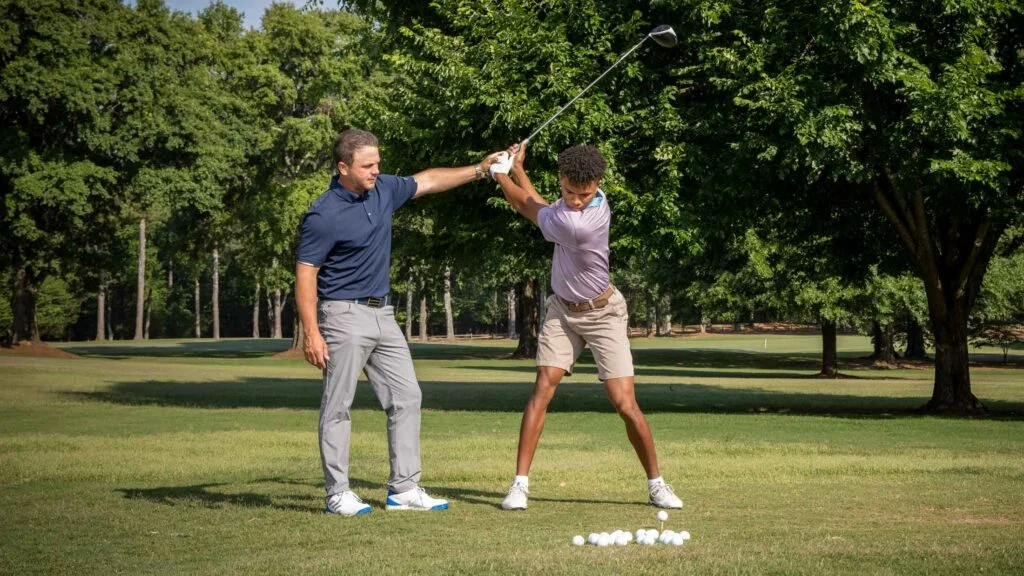
Plus, they can show you how to assess distances, pick clubs based on conditions, and develop pre-shot routines. Professional golfers like Rory McIlroy and Henrik Stenson have achieved great success thanks to the guidance of their coaches, like Pete Cowen.
Beginners can get personalized instruction from a Trained Professional. Whether you’re new to the game or want to refine your skills, they’ll help you reach your goals.
Managing Expectations and Enjoying the Process
Recognizing the challenges of golf and embracing the learning journey are key aspects of managing expectations and finding joy in the process (Reference Data: Section – Managing Expectations and Enjoying the Process).
Recognizing Golf as a Challenging Game
Golf is a tricky sport. It needs skill and presents many challenges. Overcoming these and finding personal growth in the game is the reward. Newbies should understand this to approach it with the right mindset and realistic expectations.
- Being consistent and precise in the swing, short game and putting is key. It takes practice to master each component.
- Mental aspects such as focus and keeping emotions under control play a role too.
- Golf courses have obstacles like bunkers, water hazards and rolling greens which test your ability to think quickly.
- Weather can also make things tough. Wind direction and speed affect the ball’s flight, so you must adjust your shots.
Starting with patience, perseverance and a willingness to learn from successes and failures will help newcomers. Progress will come gradually and they will enjoy the improvement journey.
Seeking advice from experienced players or pros is recommended. Golf may be challenging, but with the right help and practice, it can be a highly rewarding game that offers personal growth on and off the course.
Beginners should read golf books by experts to get tips and insights. This will help them avoid unrealistic expectations that lead to frustration or disappointment. Instead, they can relish the learning journey and experiences of playing golf. So, get out there and discover the challenges and rewards of this game!
Embracing the Learning Journey
When beginning the journey to learn golf, it’s important to have an open mind and be ready to learn. Golf is tough, and requires patience, practice, and hard work. If you take it as a learning journey, you can set realistic goals and enjoy the process of developing your skills.
To gain knowledge, read books that provide tips and advice. Also, lessons with a pro can help you understand the game, and develop the right technique.
Know that golf is challenging, and progress may take time – don’t get discouraged! See setbacks as chances for growth. When you set realistic goals and work at them consistently, you will gradually improve and enjoy the feeling of achieving progress in golf.
To embrace the learning journey, keep an open mind, learn from various sources, and find pleasure in improving. With dedication, persistence, and a good attitude, beginners can master this challenging yet rewarding sport.
Beginner’s Guide to Golf – Where and How to Play
Discover the ultimate beginner’s guide to golf and learn where and how to play this popular sport. From finding the best places to learn golf to mastering the basics of the golf swing, hitting the ball with precision while maintaining balance, and understanding the crucial short game techniques like chipping, pitching, and putting. Get ready to dive into the exciting world of golf and improve your skills on the course!
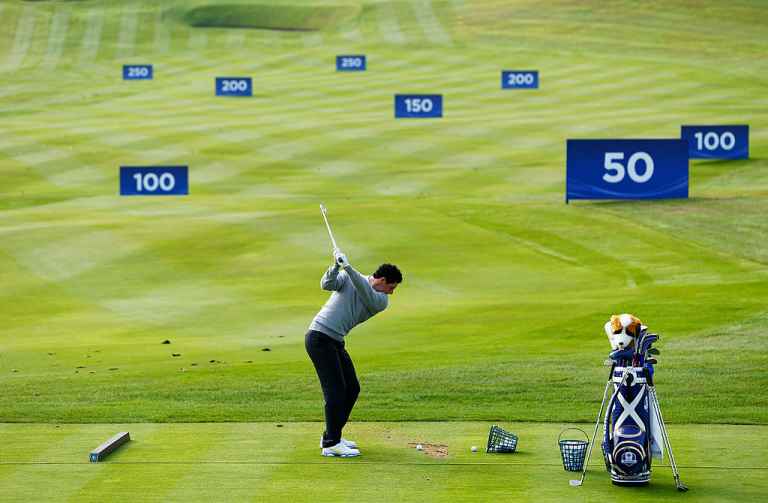
Best Places to Learn Golf
For beginners, the best places to learn golf are essential for developing their game. Here are 5 points to consider:
- Start at Driving Ranges. A controlled environment here lets them practice and work on technique without pressure.
- Move to 9-hole Pitch and Putt Courses. Shorter courses help build confidence in real-game situations.
- Learn Grip, Aim, and Posture. Expert instructors at clubs or academies teach foundational aspects.
- Understand Ball Striking and Balance. Instructors provide guidance on power, rotation, and balance.
- Master the Short Game. Practice areas devoted to chipping, pitching, and putting help refine skills.
Beginners must practice and be patient. Quality instruction at reputable locations gives them a solid foundation. An encouraging instructor can foster confidence and help improve skills. Expert instruction in the right environment is key to mastering golf.
Start at Driving Ranges
Golfers starting out can begin at driving ranges. Here, they can refine their skills in a safe and spacious area. Players can hit balls with a variety of clubs, focusing on improving their swing and distance control – without the pressure of a course.
Choose the right driving range. Look for one that has targets and distances, as well as covered hitting bays or grass areas. Warm-up properly and start with smaller clubs. Focus on proper technique and experiment with different clubs. Set goals and track your progress.
Instructors at driving ranges can give guidance and feedback on technique. Take lessons from these professionals and learn more about the game. Don’t rush the learning process. Practice consistently and have patience with yourself.
Sarah’s journey began at driving ranges. She was overwhelmed by the vastness but sought help from an instructor. She practiced her grip and posture each week. With practice, she saw improvements and gained confidence. This motivated her to try 9-hole courses. Driving ranges laid the groundwork for her continued growth in golf.
The journey to mastering golf can be tough – like finding a lost ball in tall grass.
Progressing to 9-hole Pitch and Putt Courses
Progressing to 9-hole Pitch and Putt Courses is an ideal way for beginners to refine their skills and gain confidence before tackling longer courses. This stage of learning offers a range of advantages, including:
- Focusing on short shots and putting in a less intimidating environment.
- Introducing a new level of gameplay with the chance to play different holes and strategize shots.
- Forming connections with fellow golfers and learning from experienced players.
Gauging progress and building confidence in abilities are also key benefits of playing on 9-hole Pitch and Putt Courses. To get the most out of this stage, it is important to focus on developing consistency in your short game. Chipping, pitching, and putting practice will help you make the most of the experience.
Mastering the Basics of the Golf Swing
Jessica wanted to become a golfer. She was a novice and had no confidence. She then sought help from a golf teacher. Hours of practice and understanding the basics of the golf swing helped her. Her swing became smooth and powerful. Now, she confidently plays golf. Her journey proves the value of mastering the basics of the golf swing.

To improve your golf swing, here are some basics to keep in mind:
- Grip your club with a neutral hand grip; not too tight, for a smooth swing.
- Aim your body parallel to the target line.
- Keep posture tall and straight.
- Swing the club with the right technique; rotate your torso while keeping your lower body stable.
- Read the greens before putting.
- Keep an appropriate pace of play.
Remember, mastering the basics of golf swing needs practice and dedication.
Importance of Grip, Aim, and Posture
Grip, aim, and posture are important to golf. To be good, you need the right grip on the club. This gives you power and control. Aiming correctly at the target is also essential for accuracy and precision. Lastly, posture is key. It promotes stability and balance, reducing the risk of injuries.
Beginners should get help from experienced instructors. They can provide insights and guidance on grip, aiming, and posture. Everyone may have different strengths and weaknesses. Professional instructors can help identify areas that need work and give targeted instruction. With practice, players can enhance their game and improve performance.
Tips for Hitting the Ball and Maintaining Balance
Positioning: When addressing the ball, ensure proper alignment. Keep your body and clubface parallel with the target line. Feet should be shoulder-width apart. This helps with balance during the swing.
Grip: A correct grip is essential. Hold the club with a neutral grip, neither too tight nor too loose. This allows better control and feel, enhancing balance.
Balance: Evenly distribute weight between both feet at address. Shift it during the swing. This generates power and keeps the swing stable, leading to better balance and ball-striking.
Tempo: Maintain a consistent tempo throughout the swing. No rushing or jerking. Smooth and rhythmic swings allow for better timing and accuracy, while keeping balance.
Follow-through: Focus on a complete follow-through. After striking the ball, extend your arms toward the target and finish in a balanced position. This stops imbalance caused by abrupt stopping.
By incorporating these tips, golfers can hit the ball with balance. For beginners, practice regularly to develop muscle memory.
Pro Tip: Keep flexed knees throughout the swing. This creates a solid foundation and promotes a more balanced and controlled strike.
Understanding the Short Game – Chipping, Pitching, and Putting
The short game in golf refers to chipping, pitching, and putting. These are essential for understanding the short game, improving scores and achieving success on the golf course. Good technique and understanding of these skills can help a player’s ability to navigate obstacles and make accurate shots near the green.
Chipping is a shot from close to the green. It’s hit with a low trajectory and rolled to its target. It takes skillful use of wrists and a controlled swing. Pitching is a shot that goes higher and stops quickly on the green. It’s typically from further away from the green.
Putting is very important in golf. It uses a putter to roll the ball towards the hole on the green. Accuracy and distance control are key. To get better, practice regularly and focus on technique. Putting drills can be done at home with mats or carpets. Guidance from a professional can provide tips.
By refining these skills, golfers can get their shots closer to the hole and get better scoring opportunities. With enough practice, you’ll read those greens like a fortune teller.
Reading Greens and Achieving the Desired Line
Understanding golf greens terrain is key for success. Knowing how to read slopes, breaks and speed can help a golfer make accurate putts.
- Check the slope: See if the green slopes towards or away from you. This will influence how the ball rolls.
- Identify high & low points: Check for hills and valleys which can affect direction and speed.
- Read grain: Grain is the direction in which grass blades grow. Putts hit against or with the grain behave differently.
- Look for visual cues: Dark spots or footprints may show areas where putts break or slow down.
- Aim beyond the hole: To account for breaks, aim beyond the hole instead of directly at it.
Green speeds must be known and your putting technique must be adjusted. Faster greens need softer touch, while slower greens need more power. Patience is needed when reading greens, as tiny differences may give the desired line.
Golf Digest says reading greens is one skill that separates professionals from amateurs.
Maintaining Proper Pace
To Maintain Proper Pace:
- Be Ready: Arrive early for your tee time. Give yourself time to warm-up with stretching, putting, and driving range practice. This puts you in the right frame of mind and prepares you physically.
- Stay Aware: Be aware of your position relative to other groups. Keep up with the group in front, without rushing or impeding them. When a hole is finished, quickly move to the next tee box.
- Play Efficiently: To keep a smooth rhythm, avoid unnecessary delays. Take one practice swing, keep track of your own score, and limit distractions like lengthy conversations or phone usage.
Maintaining Proper Pace is beneficial for everyone on the course. It creates an enjoyable environment and allows players to fully immerse themselves in the game.
Be prepared to play by visualizing your shot and having the right club in mind. This eliminates delays and maintains a steady pace throughout your round.
Golf Digest states that maintaining proper pace is especially important in tournaments. This ensures a fair competition for all involved.
Finding the perfect club takes time, patience, and lots of trial and error.
Golf Equipment for Beginners
When it comes to getting into golf, having the right equipment is essential. In this section, we’ll explore the necessary clubs for beginners and offer tips on selecting the right ones. We’ll also emphasize the importance of trying clubs before making a purchase. So, let’s dive in and discover the game-changing equipment that will help beginners kickstart their golfing journey.

Essential Clubs for Beginners
Golf is a complex sport. To play, you need to use various clubs. Beginners must have a set of essential clubs to get started and master their skills. These clubs are designed for versatility and ease of use.
The driver is a key club for beginners as it has a large head and a long shaft, allowing for greater distance off the tee. This club is also forgiving, helping beginners hit straighter shots with less effort.
The putter is used on the greens to roll the ball into the hole. It has a flat face and is designed for accuracy and control – making it essential for beginners.
The sand wedge is made for bunkers or sandy areas around the course. Its lofted face and wide sole help with better ball contact in tricky situations.
6-iron, 8-iron, and pitching wedge are versatile clubs for mid-range shots from fairways or rough areas. These irons offer forgiveness and control, making them ideal for beginners.
Fairway wood or hybrid is used for longer shots from fairways or roughs when more distance than an iron is required. These clubs have larger heads and more loft than drivers, making them easier to hit accurately.
Driver, Putter, Sand Wedge, 6-Iron, 8-Iron, Pitching Wedge, and Fairway Wood or Hybrid
Beginners should consider a selection of clubs including a driver, putter, sand wedge, 6-iron, 8-iron, pitching wedge, and fairway wood or hybrid.
This table shows the description of each one:
| Club Type | Description |
|---|---|
| Driver | For long tee shots with maximum distance. |
| Putter | To roll the ball into the hole. |
| Sand Wedge | For lifting the ball out of sand bunkers. |
| 6-Iron | Mid-range shots with moderate loft. |
| 8-Iron | Shorter shots with less loft. |
| Pitching Wedge | When approaching the green. |
| Fairway Wood/Hybrid | Longer shots from fairway or rough. |
Each club has a purpose. The driver for long-distance shots, the putter for accuracy. The sand wedge is great for bunker play. The 6-iron and 8-iron for mid-range shots. The pitching wedge for near the green. And the fairway wood or hybrid for long fairway and rough shots.
Having the right clubs is like selecting a dance partner. They need to fit, know the steps, and not step on your toes. Beginner’s Guide to Golf – Where and How to Play” states that a variety of clubs in the bag allows you to tackle different challenges on the course.
Tips for Selecting the Right Clubs
Choosing the correct golf clubs is a must for success on the course. Knowing which to pick can greatly affect your game. Here’s some useful advice when selecting your clubs:
- Skill level: Match your skill level with the right clubs. Novices may benefit from more forgiving clubs, while experienced golfers could prefer more specialized ones.
- Shaft flex: Flexibility of the shaft impacts how the club behaves during a swing. Consider if you need a regular, stiff or extra stiff flex based on your swing speed and strength.
- Clubhead design: Different clubhead designs give varying levels of forgiveness, workability and distance. Pick a design that suits your preferred playing style and shot shape.
- Grip size: The size of the grip can affect your control over the club. Choose a grip size that allows you to stay relaxed but still have control.
By factoring in these things, you can make better choices when buying golf clubs. Test different options, get fitted by a professional if possible and seek advice from experts to guarantee the best fit for your game.
Remember, each golfer is unique, so what may work for one person may not work as well for another. Find clubs that feel comfortable and fit your individual playing style. Ultimately, the right combination of clubs will give you the tools you need to improve and enjoy your time on the course.
Importance of Trying Clubs before Buying
Trying golf clubs before buying is essential for beginners. Testing out different clubs helps players find the ones that fit their swing style and feel comfortable. This ensures they buy the right clubs for their game, leading to better performance.
In addition, trying clubs before buying gives beginners the chance to assess each club’s performance and features. Loft angle and shaft flex can make a big difference to a player’s performance. Trying out clubs lets them choose the ones that fit their mechanics and desired outcomes.
Moreover, trying clubs before buying allows beginners to experiment with different brands and models. Different clubs can vary in quality and design. Trying out clubs lets players compare and choose the ones that work best for them.
In conclusion, trying clubs before buying is an important step for beginner golfers. It helps them find the right fit, evaluate performance characteristics, and choose the best golf equipment. Taking this step can improve their enjoyment of the game and help them progress in future rounds.
Conclusion: Navigating Golf as a Beginner
Golf can be intimidating to start. But, with the correct guidance, it can be an enjoyable experience. Here’s what to consider when starting out:
- Find the right equipment.
- Learn the rules and etiquette.
- Use resources like lessons and practice facilities.
Get the right equipment. This includes clubs that are suitable for your skill and body type. Also, get comfortable golf shoes and clothing. With the right gear, you can focus on improving your skills.
Know the rules and etiquette. Understand the basics like grip, stance, and swing. Know the rules of the game too, so you stay within the boundaries and respect other players.
Take advantage of resources. Golf lessons with a qualified instructor can help with technique, strategy, and course management. Going to the driving range or golf course regularly will help you build confidence. Make use of these resources to improve.
Sam’s story is a great example. He started golf two years ago and had a difficult time. He found an instructor and kept practicing. Now, he plays regularly with friends. His story shows that dedication and using available resources can help beginners overcome challenges.
To sum up, golf can be fun if you get the right equipment, learn the rules and etiquette, and use resources like lessons and practice facilities. With dedication and effort, you can make progress and find joy in this rewarding sport.
Some Facts About How To Get Into Golf:
- ✅ Golf is a challenging and rewarding game that can be enjoyed at any age. (Source: golfworkoutprogram.com)
- ✅ Expensive clubs are not necessary to play golf, as a great golfer can play well with any set of clubs. (Source: golfworkoutprogram.com)
- ✅ Lessons from a trained professional are more important than buying expensive clubs when starting to play golf. (Source: golfworkoutprogram.com)
- ✅ It is recommended to start at a driving range to practice hitting the ball consistently before moving on to a short course. (Source: golfinsideruk.com)
- ✅ The aim of golf is to get the ball in the hole in the fewest shots possible. (Source: golfinsideruk.com)
FAQs about How To Get Into Golf
How do I get into golf?
To get into golf, you first need to make the decision to learn and understand that it is a difficult game. You don’t need expensive clubs to play golf, as a great golfer can play well with any set of clubs. It is recommended to buy used clubs and find deals to save money. Taking lessons with a trained professional is more important than buying expensive clubs. It is important to manage your expectations and enjoy the process of learning and playing golf.
What are the basics of the golf swing?
The basics of the golf swing include grip, aim, and posture. It is recommended to seek golf lessons from a local professional to develop good habits and improve your game. Focusing on a smooth swing, hitting down on iron shots, and maintaining a balanced finish are some tips for hitting the ball well. Reading golf books, such as Ben Hogan’s “Five Lessons: The Modern Fundamentals of Golf,” can also help improve your swing.
What are some tips for playing golf?
Some tips for playing golf include starting at a driving range to practice hitting the ball consistently before moving on to a short course. Blending time on the range with playing on a course can improve both swing technique and course management skills. It is recommended to learn the rules of golf, including par, birdie, bogey, and double bogey. Additionally, developing a range routine and practicing short shots can greatly improve your game.
Where can I learn more about golf rules and scoring?
There are resources available online to learn more about golf rules and scoring. Websites like Golf Insider UK and Golf Digest provide comprehensive guides for beginners. It is also helpful to seek guidance from a local professional who can provide personalized lessons and advice on golf rules and scoring.
What equipment do I need as a beginner golfer?
As a beginner golfer, it is recommended to start with a few essential clubs such as a driver, putter, sand wedge, 6-iron, 8-iron, pitching wedge, and fairway wood or hybrid. Hybrids and irons with wider soles are preferable for beginners. It is important to try clubs before buying to find the right shaft flex and loft. Taking lessons from a PGA professional can also help determine the appropriate equipment for your skill level.
Where are some beginner-friendly golf courses?
For beginners, the best places to learn golf are driving ranges and 9-hole pitch and putt courses. Starting at a driving range allows you to practice hitting the ball consistently before moving on to a short course. Once the basics are mastered, you can progress to a full 18-hole course. It is suggested to choose a beginner-friendly course that is flat, short, and has few hazards. Playing from the forward set of tees and starting on a par 3 or executive course are also great options for beginners.







